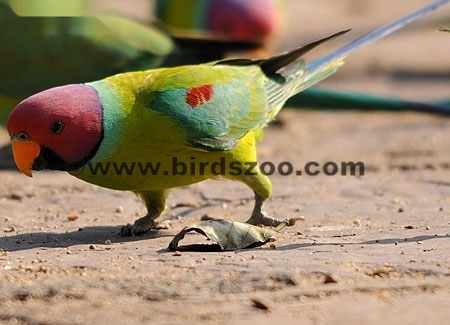Ringneck Genetics


With as many primary and secondary mutations as are now available to the average Ringneck breeder, a basic working knowledge of genetics is important. One of the most asked questions I get is “If I put my Blue male with my Lutino hen, what color will the babies be?” I am not a geneticist and certainly don’t claim to be an expert, but I do understand how each of the Primary mutations are inherited, and so can you. Once you understand how each color is inherited, you will begin to understand how to breed more efficiently to produce the Ringneck colors you desire. What follows is a very short and simple explanation of inheritence and several formulas (test pairings and their projected offspring). I hope that this explanation along with the charts will be of some help.
Primary Mutations are genetic building blocks. They occur spontaneously and cannot be created. In order to breed a certain primary mutation, it must be present in the parent stock either visually or in split(hidden) form.
Secondary Mutations are the colors produced by combining two or more Primary mutations.
| Primary Mutations: Lutino Blue Grey-green Turquoise (Pastelblue) Cinnamon Fallow Lacewing Yellowheaded (Buttercup) Yellowheaded-Yellowtailed Greensuffused Yellow Greencinnamon Dark Green Pied |
Secondary Mutations: |
There are four types of genetic inheritence in Ringneck Parakeets:
Recessive:
To produce offspring of this inheritence, both parent birds must carry the mutation either visually or in split(hidden) form. To produce a split to a recessive mutation simply breed a visual example of the mutation(male or female) to a mate of any other color. All of the resulting offspring will be split to that visual recessive color.
Sex-linked:
Visual female offspring of mutations carrying this form of inheritence can be produced by mating a male that is carrying the mutation either visually or in split(hidden) form to a mate of any other color. To produce visual sex-linked offspring of both sexes, both of the parent birds must carry the mutation. Only males can carry a sex-linked mutation in split(hidden) form.
Dominant:
To produce both male and female offspring of this inheritence, only one parent(male or female) must carry the mutation visually. There are no splits with a dominant inheritence and double factor birds can be bred by mating two single factor birds together. A double factor bird(male or female) when mated with any other color will produce 100% visual single factor offspring. Double factor birds can only be produced with a dominant inheritence.
When reading the genetic formulas, Visual mutations will always be CAPITALIZED, split traits will always be in lower case and will follow this mark / . DF means double factor and the charts are always set up like this:
MALE X FEMALE
MALE FEMALE
OFFSPRING OFFSPRING